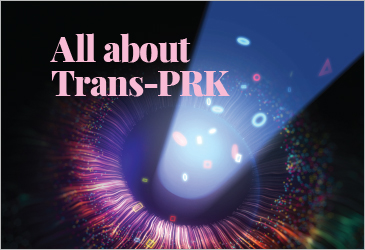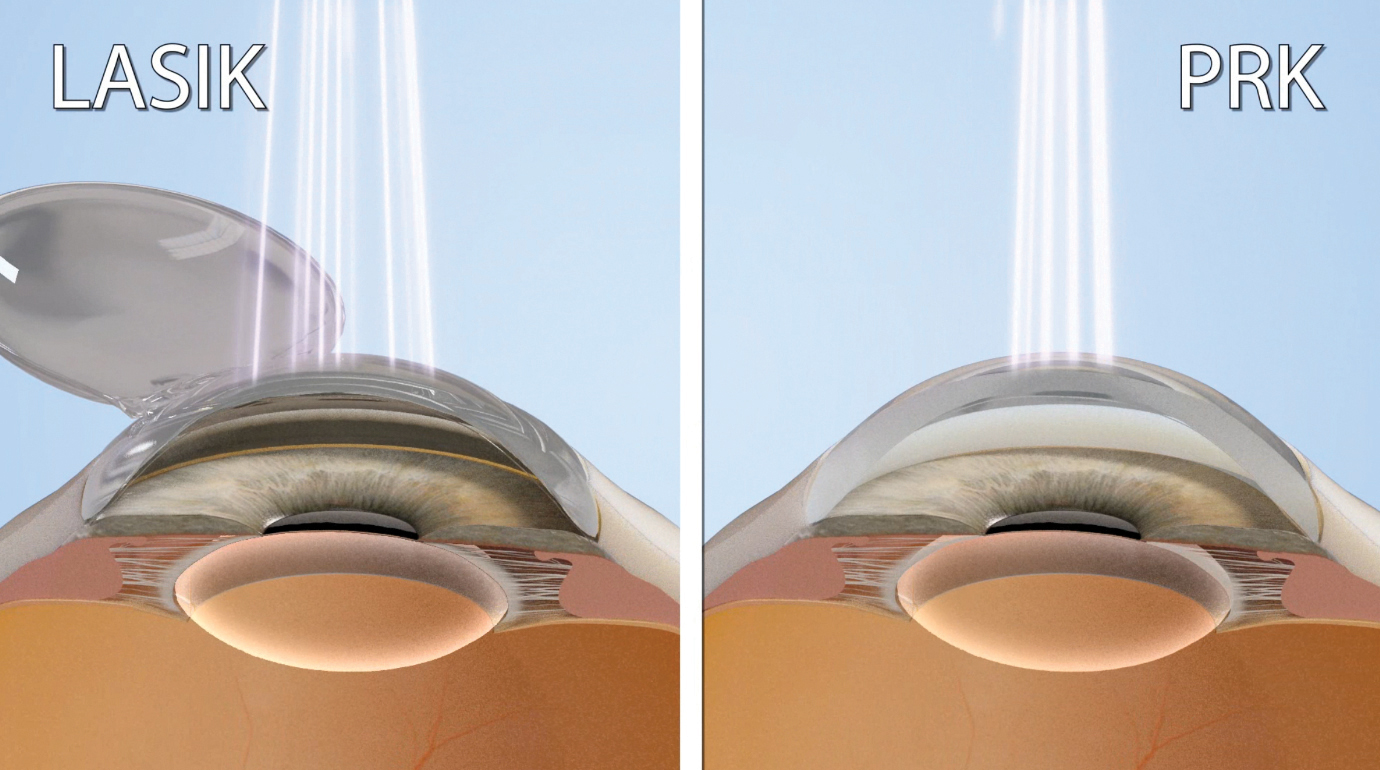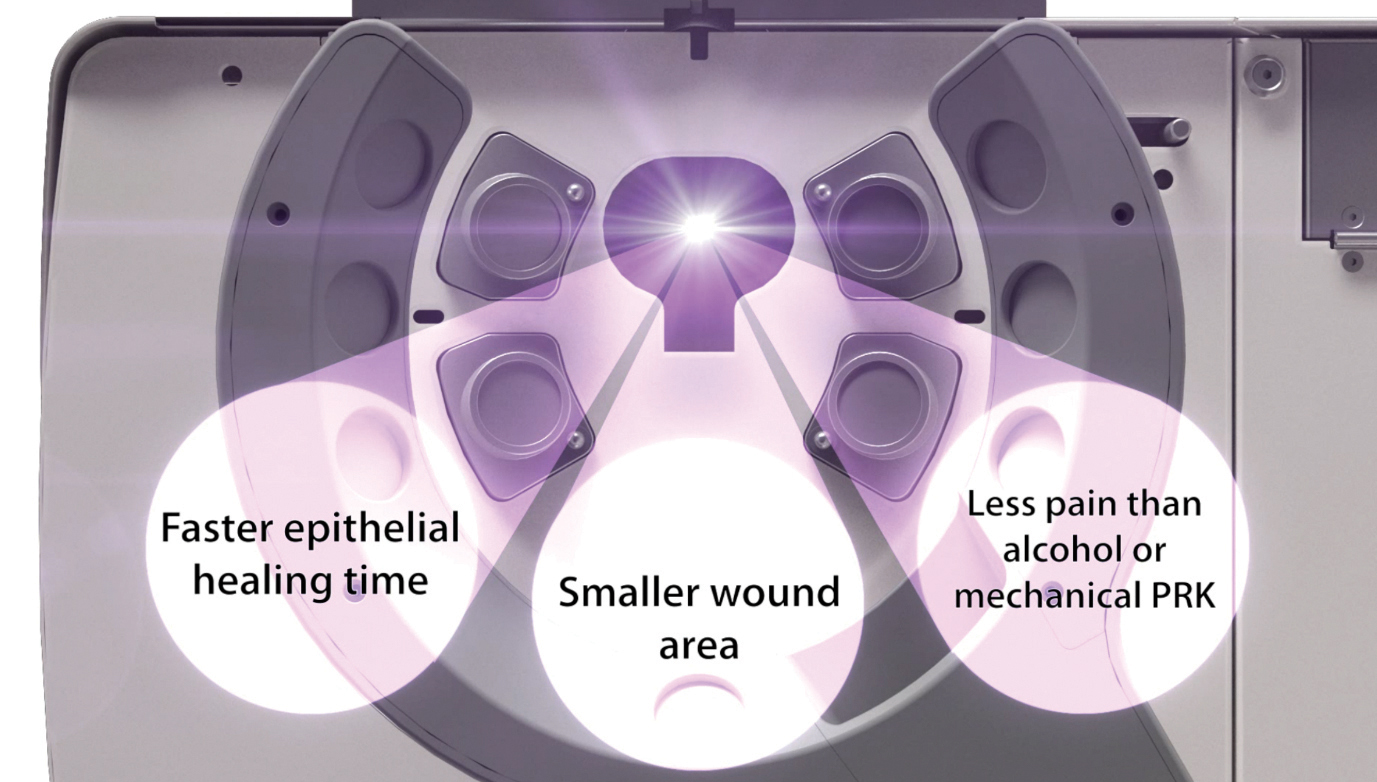Building on established surface ablation methods, Trans-PRK is one of the latest innovations for correcting refractive errors in vision.

LASIK is the most renowned and colloquial term for eye surgeries which negate or reduce the need to wear spectacles or contact lenses. However, there are many other kinds of procedures, such as LASEK and Refractive Lenticule Extraction (such as SMILE procedure), which are performed to correct refractive errors.
Trans-epithelial Photorefractive Keratectomy (Trans-PRK) is innovated from Advanced Surface Ablation (ASA) methods that have been around for more than 30 years. It is a procedure in which the epithelium (outer layer of the cornea) is first removed with a phototherapeutic keratectomy laser (as opposed to diluted alcohol in LASEK), followed by a newer surface ablation method using a single excimer laser machine. A bandage contact lens is then applied on the eyes for up to a week, depending on the pace of healing.
ADVANTAGES OF TRANS-PRK
According to Dr Tan Peng Yi, Associate Consultant, Refractive Surgery Department, this no-touch, all-laser Trans-PRK procedure can be more advantageous than conventional Advanced Surface Ablation (ASA) techniques for a variety of reasons:
- No mechanical removal of corneal tissue
- Shorter surgery time and better comfort
- Faster recovery from surgery
- No alcohol use
Also, Trans-PRK requires less corneal tissue than LASIK or Refractive Lenticule Extraction surgery. It is therefore suitable for individuals with thin corneas, dry eyes or those who play contact sports.
MYTHS AND FACTS OF TRANS-PRK
Myth: There is a risk of the laser zapping the wrong area if the eyeballs make involuntary movements.
Fact: Most laser platforms have highly advanced eye tracking devices which compensate for any minor eye movements during the procedure. These active tracking systems follow the patient’s eye position at a speed of up to 4,000 times per second and redirect the laser pulses precisely.
Myth: The results from Trans-PRK might not be as good as LASIK or SMILE.
Fact: Trans-PRK requires a longer recovery period than LASIK or SMILE. However, Trans-PRK clinical studies have shown good safety, efficacy and predictability. Its long-term outcomes are comparable to LASIK or SMILE.

(Above) Illustration comparing LASIK and PRK. Left: LASIK flap is lifted before excimer laser is applied. Right: PRK Excimer laser is applied directly onto the cornea after removing the corneal tissue.
(Below) Advantages of Trans-PRK compared to conventional PRK. (Image credit: Alcon)

SUITABILITY FOR TRANS-PRK
Suitable for people who:
- Wish to be spectacle and contact lens independent
- Are more than 21 years of age
- Have stable refraction, sufficient corneal thickness and a healthy cornea
Not suitable for people with:
- Eye diseases such as glaucoma, corneal scar and retinal issues
- Systemic issues such as connective tissue disorder and use of certain medications
- Pregnant women
Click
here to check out other articles in
SINGVISION Issue 1/2022.
